Naples city of art, Naples is an unlimited source of inspiration, Naples the capital with thousand faces, Naples slave, Naples queen. The Saint and the prostitute, the slave and mistress, romantic Naples, surreal Naples. Naples that never stops to fascinate people all over the world, thanks to its unique scenery and incomparable views.
In the centuries countless painters have set Naples vivid colors on the canvas.
Six famous and immortal artists paint Naples on canvas for posterity, bringing the inner perspective of one of the most fascinating and controversial cities in the world.
6 – Van Wittel, “View of the port of Naples”

Gaspar Adriaensz van Wittel, Gaspare Vanvitelli in italian, was an Holland- Italian painter. In 1674 he moved to Rome where artists came from all over the world, many of them were are Dutch. A great visual artist, a pictorial genre that deals with landscapes, in Naples he is a guest of the Spanish Vicere’ from 1699 to 1702. Today, we can admire his works at the Museum of Capodimonte, Zevallos Palace, San Martino Museum and Reggia di Caserta, where his drawings are preserved.
5 – Bruegel the Elder, “View of the Port of Naples”
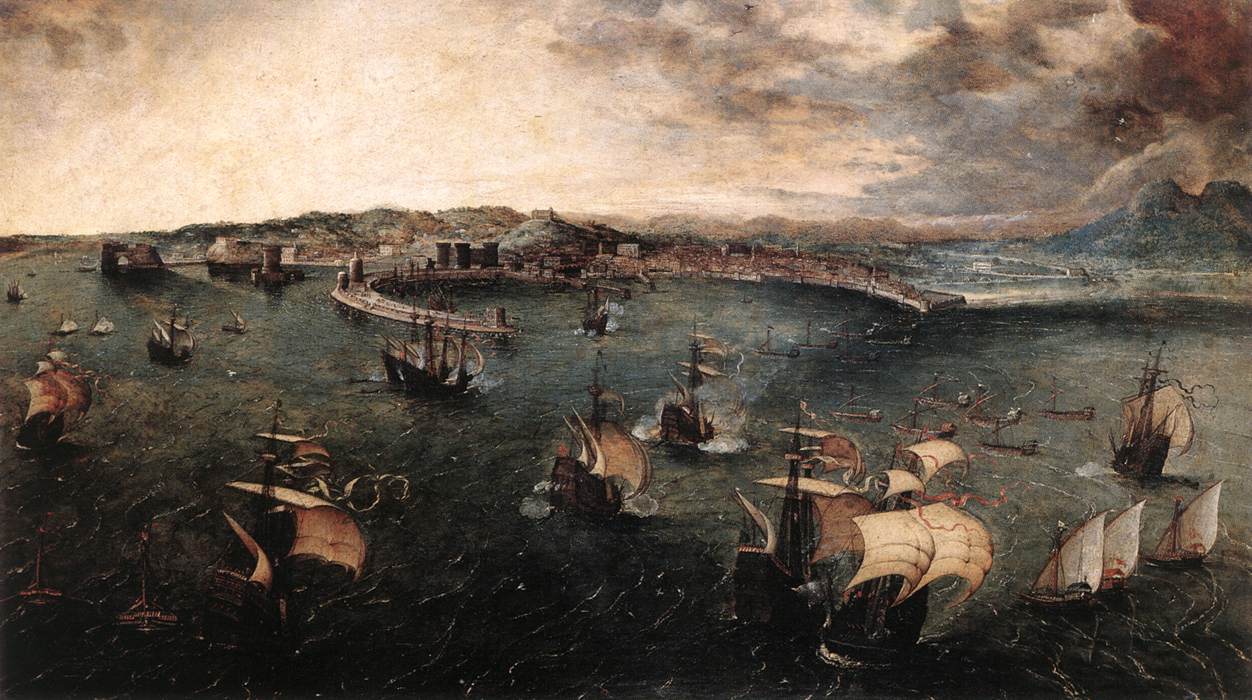
Known as the older to distinguish him from his son and grandson, also artists, Pieter Bruegel is a great Dutch painter of the first half of the fifteenth century. He visits Italy and in 1552 landed in the Bourbon town where he paints a “View of the port of Naples”: a naval battle involving several boats that takes place in the foreground. The background is the Gulf of Naples and Vesuvius, painted with a raised horizon, typical of the Flemish artists, allowing a particularly wide breath on the horizon. Several monuments are recognized: the ruins of Castel dell’Ovo, Castel Nuovo, the lost San Vincenzo Tower and semicircular piers, an imaginative elaboration of the author. In the topographic maps of the time the port is rectangular, but the change of reality comes from the desire to make the prospect more refined and dynamic.
4 – Van Pitloo, “Castel dell’Ovo from the beach”
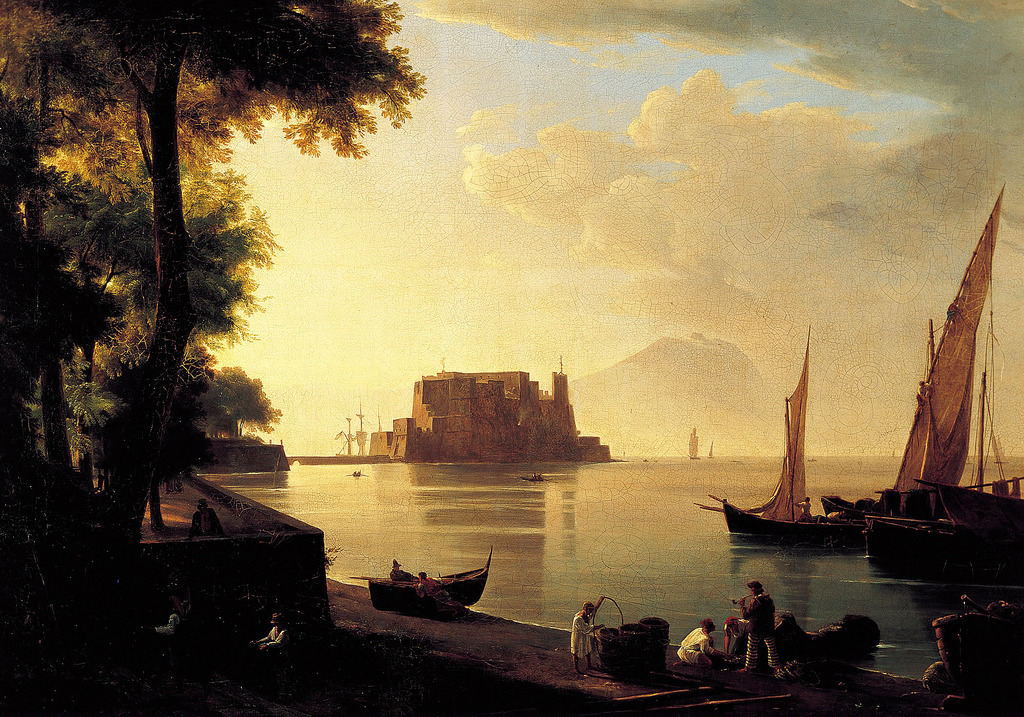
Considered among the founding fathers of the Posillipo School, the Dutch Anton Sminck van Pitloo studied design in the hometown of Arnhem and then continued his studies in Paris, thanks to a scholarship offered by Luigi Bonaparte. He concludes in 1811 his academic itinerary in Rome, astahe of the grand tour mandatory for each artist. After the fall of Bonaparte, Pitloo decided to settle in Naples where he opened an art school and became the founder of the Posillipo School for years. His works brings great innovation in the landscaping art of the 18th century. While the tradition wants a truthful and documentary style, the artist has a modern and romantic vision of nature. The direct observation of the places refines his sensitive attention to light and color, almost as an impressionist.
3 – Turner, “Vesuvius Eruption”
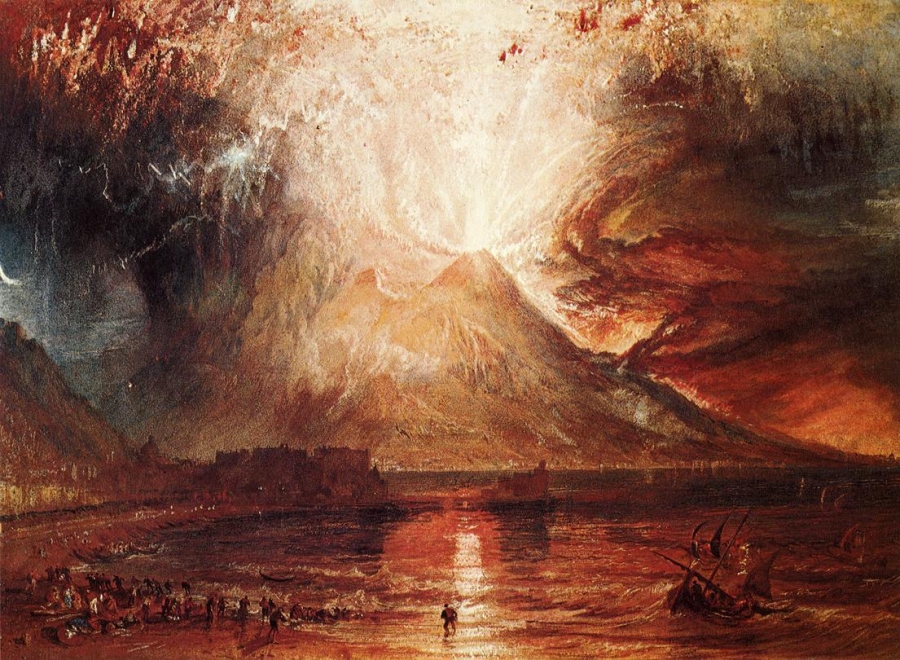
In 1819, the English painter Joseph Turner, known as the “painter of light“, travels a long journey to Italy. He Visited Venice, Rome, and Naples, He was fascinated by Mediterranean colors, which give to his style the decisive turning point, especially in some views of Venice, where light and colors are the real protagonists. In Naples he made seven watercolor studies of the city. Three of these are views of Castel dell’Ovo, one of the Neapolitan beauties that had attracted the artist’s attention. This picture, on the other hand, shows the Vesuvius in eruption. Turner, as one can easily imagine from his other works, was a fan of the sublime.
2 – Renoir, “The Bay of Naples”
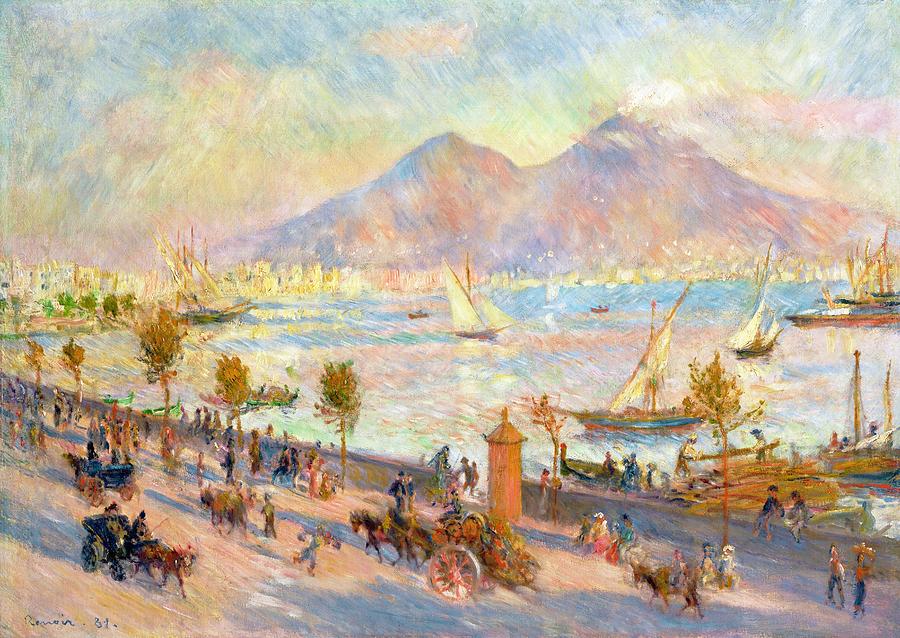
In 1881, in a moment of artistic disorientation, Pierre-Auguste Renoir, one of the most important impressionist painters , decides to come to Italy to study ancient art and Renaissance masters. Until then, he painted “on the motive” with passion, capturing the freedom of light, but he feels the need to make shapes more incisive and better understand the role of drawing, line and oil technique. The Italian period, completed in 1882 was a journey of work and experimentation. Renoir is fascinated by the splendor of the Parthenopean city and painted it with delicacy and magic. The opera ” The Bay of Naples” is the most vivid testimony of his activity in Italy.
1 – Wharol, “Vesuvius”
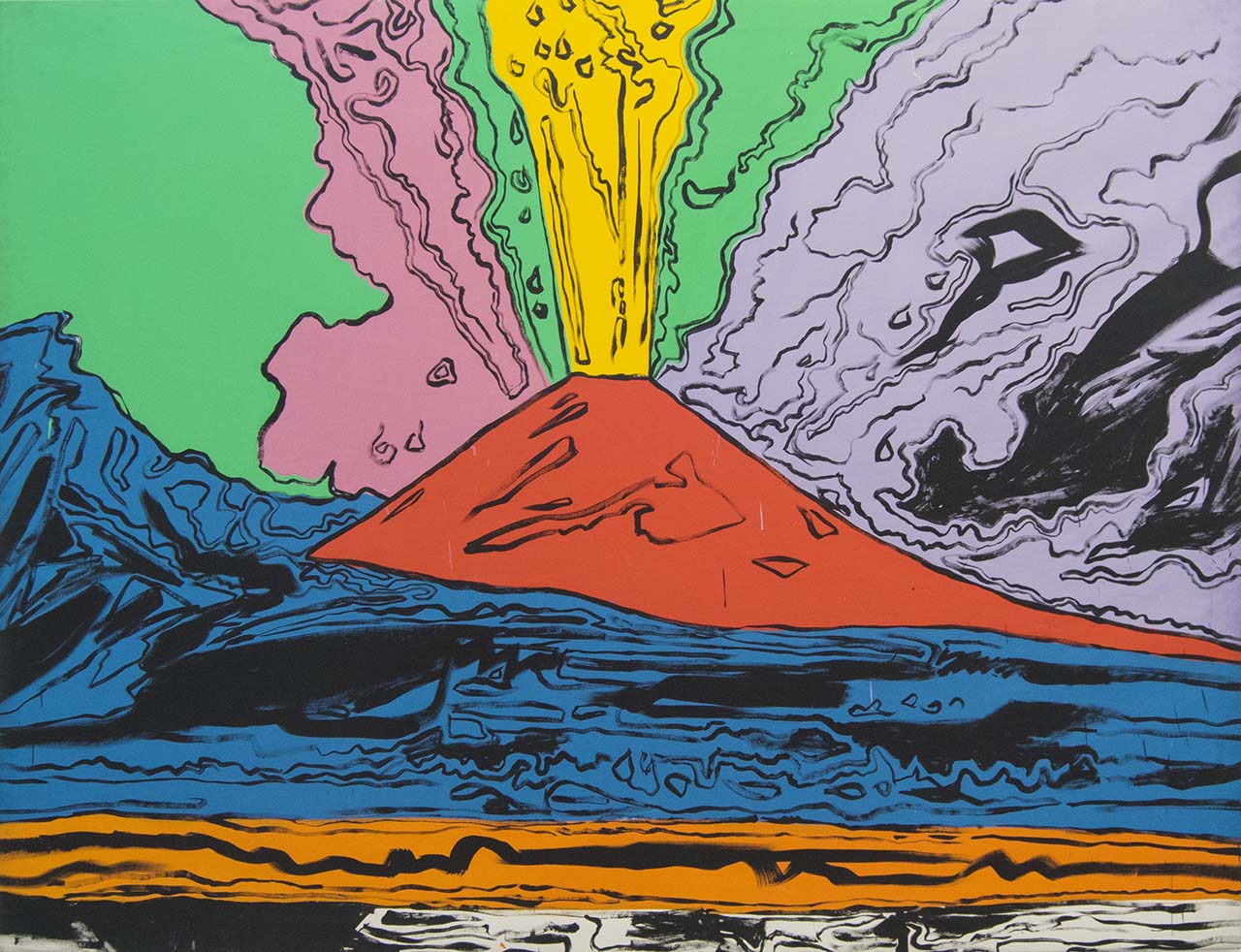
It is 1975 when Andy Warhol comes for the first time in Naples, invited from the gallerist Lucio Amelio. They begin a perfect partnership and an artistic adventure with the Vesuvius as background. The monument to this union is “Do soon” born right after the 1980earthquake in Irpinia. Warhol, involved in Amelio’s “Terrae Motus” project, will make from the gigantography taken from the dramatic first page of the journal il Mattino an eternal tombstone. The father of pop art loves the alleys of the city and was attracted in particular by the femminielli, a version of drag queen of New York’s slums. Small and tasty gems are the Napoliroid, taken by Warhol around the city with his inseparable Polaroid: an imaginary liaison between Naples and New York. “Vesuvius”, a pop revision of the Vesuvius eruption, itis the symbol of a vibrant city full of colors to discover.










Lascia un commento